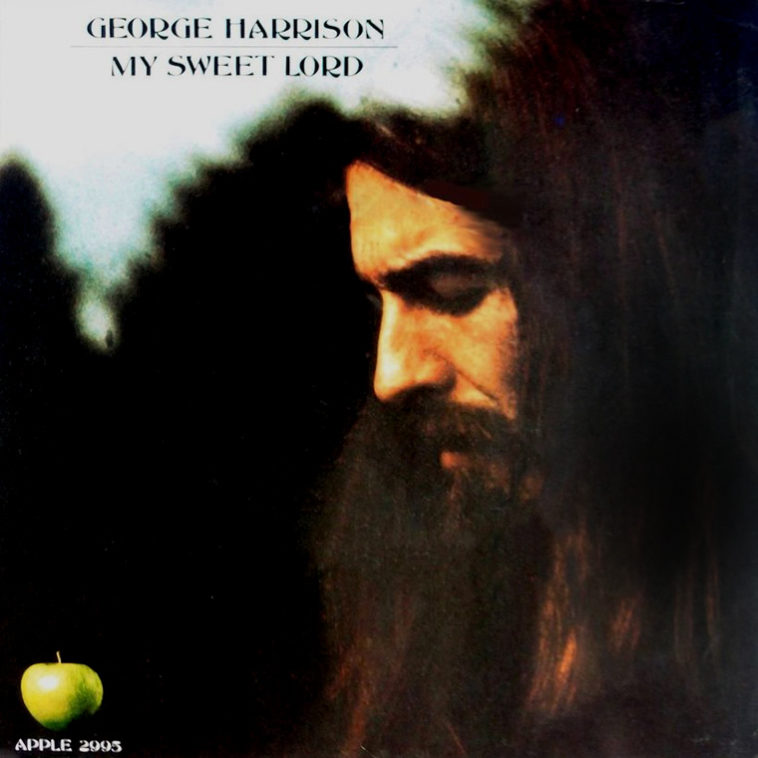
As well as being one of the few musicians to co-write songs with Dylan, Harrison had recently collaborated with Eric Clapton on “ Badge“, which became a hit single for Cream in the spring of 1969. Coinciding with this visit was a surge in Harrison’s songwriting output, following his renewed interest in the guitar, after three years spent studying the Indian sitar. While in Woodstock in November, Harrison established a long-lasting friendship with Bob Dylan and experienced a creative equality among the Band that contrasted sharply with John Lennon and Paul McCartney‘s domination in the Beatles. Music journalist John Harris has identified the start of George Harrison‘s “journey” to making All Things Must Pass as his visit to America in late 1968, following the acrimonious sessions for the Beatles‘ White Album. In January 2014, All Things Must Pass was inducted into the Grammy Hall of Fame. Among its appearances in critics’ best-album lists, All Things Must Pass was ranked 79th on The Times ‘ “The 100 Best Albums of All Time” in 1993, while Rolling Stone currently places it 433rd on the magazine’s “ 500 Greatest Albums of All Time“.

Following this reissue, in March 2001, the set was certified six-times platinum by the Recording Industry Association of America. ĭuring the final year of his life, Harrison oversaw a successful reissue campaign to mark the 30th anniversary of the album’s release. Reflecting the widespread surprise at the assuredness of Harrison’s post-Beatles debut, Melody Maker ‘s Richard Williams likened the album to Greta Garbo‘s first role in a talking picture and declared: “Garbo talks! – Harrison is free!” According to Colin Larkin, writing in the 2011 edition of his Encyclopedia of Popular Music, All Things Must Pass is “generally rated” as the best of all the former Beatles’ solo albums. The album was co-produced by Phil Spector and employs his Wall of Sound production technique to notable effect Ben Gerson of Rolling Stone described the sound as “ Wagnerian, Brucknerian, the music of mountain tops and vast horizons”. The sessions produced a double album’s worth of extra material, most of which remains unissued.Īll Things Must Pass was critically and commercially successful on release, with long stays at number 1 on charts around the world. Among the large cast of backing musicians were Eric Clapton and Delaney & Bonnie’s Friends band – three of whom formed Derek and the Dominos with Clapton during the recording – as well as Ringo Starr, Gary Wright, Preston, Klaus Voormann, John Barham, Badfinger and Pete Drake. Production began at London’s Abbey Road Studios in May 1970, with extensive overdubbing and mixing continuing through October. Several commentators interpret Barry Feinstein‘s album cover photo, showing Harrison surrounded by four garden gnomes, as a statement on his independence from the Beatles. The original vinyl release consisted of two LPs of songs and a third disc of informal jams, titled Apple Jam.

All Things Must Pass introduced Harrison’s signature sound, the slide guitar, and the spiritual themes that would be present throughout his subsequent solo work. The album reflects the influence of Harrison’s musical activities with artists such as Bob Dylan, the Band, Delaney & Bonnie and Billy Preston during 1968–70, and his growth as an artist beyond his supporting role to former bandmates John Lennon and Paul McCartney. It includes the hit singles “ My Sweet Lord” and “ What Is Life“, as well as songs such as “ Isn’t It a Pity” and the title track that had been turned down for inclusion on releases by the Beatles. Recorded and released in 1970, the album was Harrison’s first solo work since the break-up of the Beatles in April that year, and his third solo album overall. Album artwork of the 2001 re-release of All Things Must PassĪll Things Must Pass is a triple album by English musician George Harrison.


 0 kommentar(er)
0 kommentar(er)
